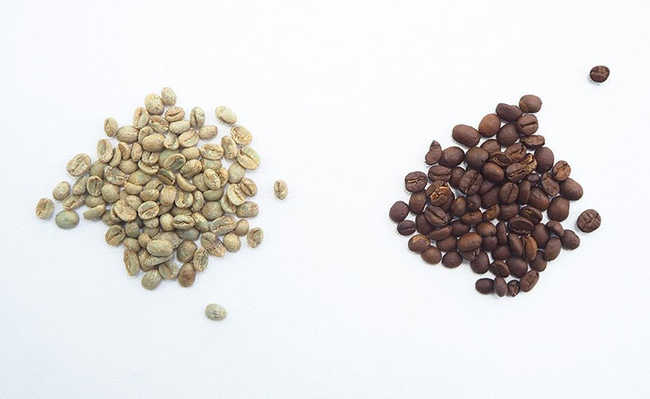Understand what regenerative agriculture is
Regenerative agriculture is a method that proposes to recover ecosystems

Image: Jan Kopřiva in Unsplash
The term “regenerative agriculture” was coined by the American Robert Rodale, who used ecological hierarchy theories to study the processes of regeneration in agricultural systems over time. It is a concept linked to the possibility of producing by recovering soils. Its proposal aims at the regeneration and maintenance of the entire food production system, including rural communities and consumers. This regeneration of agriculture must take into account, in addition to economic aspects, ecological, ethical and social equality issues.
Conventional agricultural practices – growing crops and livestock, as well as deforestation – account for an estimated one-quarter of global greenhouse gas emissions, according to the Environmental Protection Agency (EPA). The effects of industrial agriculture are quite visible, from the dead zone in the Gulf of Mexico to forest fires in the Amazon.
While organic farming has had a positive impact on the planet, even more can be done to reduce the global carbon footprint by adopting regenerative farming.
The History of the Regenerative Agriculture Movement
Organic farming provided the foundation for the American regenerative farming movement. Organic agriculture, a term that emerged in the 1940s, is commonly granted to J.I. Rodale of the Rodale Institute. Organic farming practices are also used in regenerative agriculture, including reduced use of pesticides, herbicides and fertilizers.
As the organic movement grew in the 1970s, farmers began to dedicate a cultivated area to organic crops. When they saw economic benefits from less chemical use while maintaining similar yields to conventional farming, they implemented some additional practices.
In the 1980s, Midwestern US corn and soybean producers faced an agricultural crisis due to declining soil performance. To address this, these farmers reduced the plowing of the soil and used cover crops to try to rehabilitate the land. At the same time, conventional producers started to produce organic products, increasing the volume of products.
In this context, Robert, son of J.I. Rodale, decided to take a step forward in organic agriculture, coining the term “regenerative organic”. This holistic approach to agriculture is based on the principles of organic agriculture combined with soil health and land management practices that mimic nature. The main practices of regenerative agriculture are:
- Crop rotation or successive cultivation of more than one plant on the same land;
- Cover the crop or planting year-round, so that the land does not fallow during the off-season, which helps to prevent soil erosion;
- Conservative cultivation, or less plowing of fields;
- Cattle pasture, which naturally stimulates plant growth;
- Decrease in the use of fertilizers and pesticides;
- No (or limited) use of Genetically Modified Organisms to promote biodiversity;
- Animal welfare and fair labor practices for producers.
Benefits of regenerative agriculture for the environment
Soil care is an important aspect of regenerative agriculture. Thanks to its practices, it is possible to recover impoverished soils and guarantee their good use. In this context, regenerative agriculture values the microorganisms present in the soil, as they are fundamental for the maintenance of the land. Therefore, one of the mechanisms of this type of agriculture is the development and use of biofertilizers prepared with natural materials, which are later made available to the farmer. These biofertilizers enrich the soil and benefit the crop with microorganisms.
- What is the trophobiosis theory
Micro-organisms are responsible for promoting a symbiosis cycle and making the nutrients that are already in the soil available to plants. Furthermore, within the context of regenerative agriculture, biofertilizers are produced in a sustainable way.
In the case of the regeneration of an impoverished soil, the procedures aim to provide water, food and air, making it suitable for planting. In eroded agricultural soils, in turn, it is necessary to replace its nutrient content, which will help its regeneration process.
According to researchers, regenerative agriculture can help reverse climate change. Some practices, such as plowing the soil for planting, result in the emission of carbon stored by ancient roots found in the ground. In the atmosphere, this element combines with oxygen to form carbon dioxide, one of the main greenhouse gases. Releasing this carbon also harms the health of the soil as it makes it difficult for new vegetables to grow.
Keeping a root live in the soil at all times, as regenerative agriculture envisions, helps cycle nutrients without removing stored carbon. Meanwhile, the use of organic compounds increases the variety of micro-organisms present in the land, which feed the plants and help manage pests. Cross-planting, that is, of more than one species in the same space, is also an important technique in regenerative agriculture.
These farming practices can help restore the natural balance of healthy soils. According to a report by the Rodale Institute, switching to regenerative agriculture could help absorb 100% of the carbon dioxide emitted into the atmosphere.










